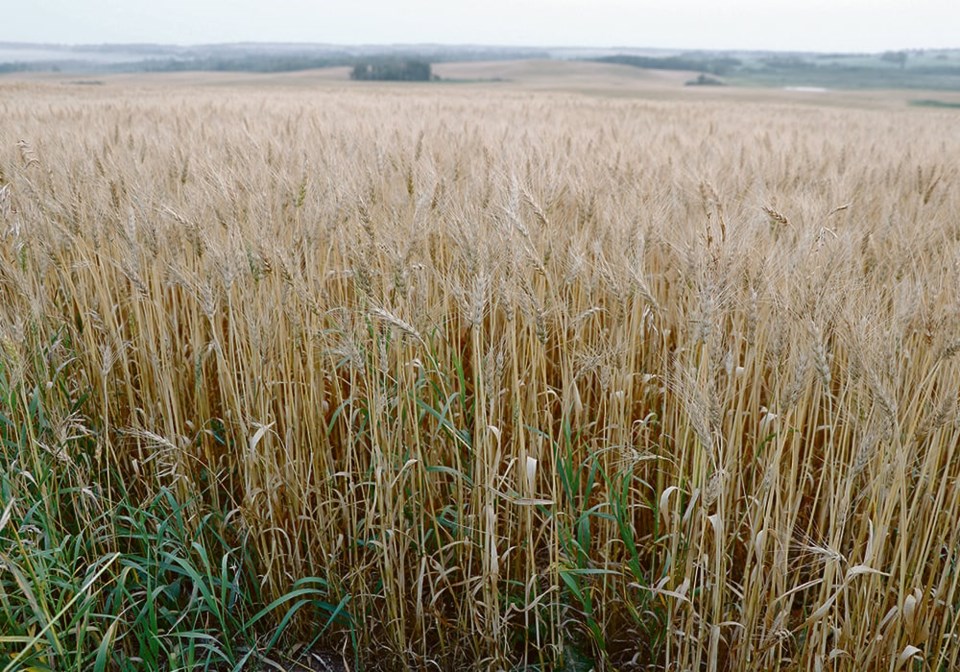REGINA — Saskatchewan’s move to individual crop insurance premiums was widely welcomed when introduced last year but at least one farmer said he preferred the program the way it was.
Don Tremblay, who farms south of Moose Jaw and is reeve of the Rural Municipality of Hillsborough, said he believes the change has not been good for everyone because drought-affected farmers are facing much higher premium costs.
He told that to agriculture minister David Marit during the bearpit session at the recent Saskatchewan Association of Rural Municipalities convention.
“The premier said you guys didn’t move the goal posts, but you did on crop insurance. You really moved them,” he said, referring to an earlier comment from premier Scott Moe on a different topic.
“You’ve ruined that program. You really have.”
Tremblay said some farmers in his area have premiums of $70 per acre for 80 per cent coverage of less than $400 per acre. Instead of all participants in it together, the program picks winners and losers, he said, and that never would have happened before the changes were made. Premiums have gone up for those who can least afford it, he said.
The issue is elimination of the experience discount or surcharge program when individual premiums were implemented. Premiums are now calculated by crop, and claim history stays with that crop.
In an interview, Tremblay said he has participated in crop insurance since 1981 when he began farming. Over time he was able to build up premium discount points for the years in which he didn’t make claims. He said he was up to 16 points and a 50-percent discount when the program was changed.
“Now that’s all gone,” he said.
He used fire insurance to make his point. If one house burns, the owner’s premium doesn’t triple and if a house doesn’t burn, the premium doesn’t drop to zero, but that’s what crop insurance does now, he said.
During the bearpit, Marit said total premiums of about $1 billion cover risk of about $14 billion.
He said premiums are a component of rebuilding the crop insurance fund, which in 2020 had a surplus of about $3 billion.
Sask. Crop Insurance acting CEO Jeff Morrow said that strong financial position allowed a 20 per cent reduction in premiums.
“Fast forward three years and almost $6 billion in claims, our crop insurance fund has been withdrawn and so we are in a spot where we are actually building back premium to build that crop insurance fund back up,” he said.
“Each year that crop insurance fund is managed through a pre-approved schedule, certified by actuaries that look at the financial position, and that dictates if it’s at a point where we can actually reduce premium or have to add to build back the fund.”
Morrow said the same amount of premium is collected as would have been under the experience discount or surcharge program.
But Tremblay said in recent years of drought he could have made claims and still been at a 50-percent discount.
He also took issue with SCIC going back 25 years to calculate individual premiums, saying 10 years would be more reasonable.
He said the former version of the program offered more protection because, while premiums varied, they didn’t swing too wildly.
“We were at 50 percent (discount) for a reason,” Tremblay said. “Now there’s no cushion. The west side of the province is going to pay heavily, and that’s when they can least afford it.
“The way it is now, the ones that are hurting the most are filling in the gap and the ones that haven’t had a drought or haven’t had a claim, their premiums go down … another drought year and these premiums will be right out of control.”
Morrow said participation remains strong at 36 million acres insured last year. Tremblay said that makes sense because risk is so high, but farmers are definitely upset with their premium costs.
“I’m still going to take crop insurance, obviously, but I think they made a mistake,” Tremblay said, noting he and crop insurance officials have agreed to disagree.




